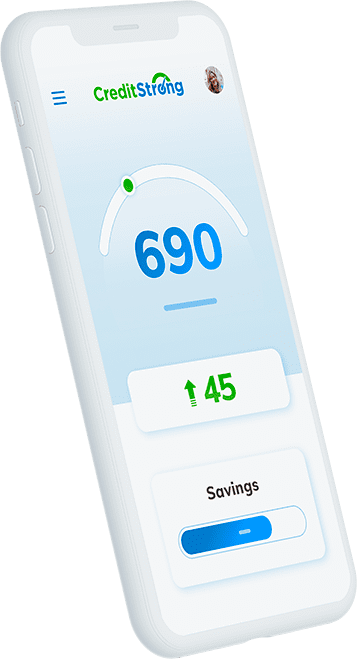SBA Microloans: Everything You Need to Know

Build strong business credit
with your EIN

The SBA microloan program provides a relatively small amount of funding for select small businesses through nonprofit intermediary lenders.
If your small business is a startup or you belong to certain communities that are often underserved by commercial lenders, you may be able to get up to $50,000 in financing to build your business.
Before you apply, it’s important to know what SBA microloans are, how they work, their eligibility requirements, and their benefits and drawbacks.
What Is an SBA Microloan?
SBA microloans are part of a federal program where the Small Business Administration works with community-based lenders to provide loans to certain types of small businesses.
The federal agency provides funding to nonprofit intermediary lenders to provide these loans to eligible small businesses.
This approach is different from the SBA’s other loan programs, where the federal agency partially insures loans originated from commercial lenders rather than providing the loan funds itself.
The program is designed to assist small businesses that are owned by women, low-income entrepreneurs, veterans, and minorities.
If you qualify, you may be eligible to borrow up to $50,000, but most businesses qualify for much less. The federal agency doesn’t have a minimum loan amount, but intermediary lenders may add their own minimums.
According to a report by the Congressional Research Service, SBA microloan intermediaries provided 5,890 loans to small businesses during the fiscal year 2020, with an average Microloan amount of $14,434.
Interest rates on these loans typically range from 8% to 13% in 2023, but the average rate in the fiscal year 2020 was 6.5%, according to the report.
Repayment terms can be as long as six years, depending on the loan amount, how you’re planning to use the funds, the lender’s requirements, and your needs.
What Can an SBA Microloan Be Used For?
There are many different ways you can use an SBA microloan. The federal agency’s program focuses on rebuilding, re-opening, repairing, enhancing, and improving, which includes a lot of different options. Here are some examples:
- Working Capital: This category includes short-term expenses that you expect to pay within the coming year. It can include some of the other items on this list, in addition to things like payroll, accounts payable, interest, taxes, and more.
- Inventory: These are the raw materials you use for your products and services, including finished goods.
- Supplies: These are items that you purchase and use up as part of your regular business operations. It can include things like staplers, printers and copiers, pens and paper, and similar items.
- Furniture and Fixtures: This covers any type of furniture and fixtures you need to run your business. Depending on the makeup of your business, it can include office furniture, furniture for your customers, lighting, drapes, and similar items.
- Machinery and Equipment: These are longer-lasting items that you need to run your business. Examples can include vehicles, commercial ovens, farm machinery, medical equipment, and more.
Overall, there are a lot of different expenses that can fall under any of these categories. The SBA lists only two restrictions: You can’t use microloan funds to pay off existing debt or to purchase real estate.
Who Is Eligible for an SBA Microloan?
As previously mentioned, SBA microloans are primarily designed to help startups and small businesses owned by women, veterans, minorities, and low-income individuals. That said, the program is open to all for-profit small businesses and not-for-profit childcare centers.
According to the Congressional Research Service report, 30% of microloans during the fiscal year 2020 went to small businesses in the startup phase.
That said, the federal agency doesn’t provide minimum requirements to get approved. Instead, the SBA leaves it up to the intermediary lenders to set their own credit criteria.
While it’s possible to get approved, even without strong personal or business credit or a high income, it’s ultimately up to the lender to decide.
As a result, it’s a good idea to research different lenders and get an idea of what their eligibility requirements are. While one intermediary may not approve your application, another may be willing to.
There are, however, two things that the SBA calls out that small business owners will likely be required to furnish to get approved: collateral and a personal guarantee.

Collateral
Collateral offers a lender a second way to repay the loan in the event that the small business or its owner can’t. If the business defaults on the microloan, the lender can seize the collateral and sell it to recoup the remaining balance.
Assets you may be able to use as collateral include real estate, equipment (office or manufacturing), accounts receivable, inventory, or even personal assets.
The value of your collateral must typically be enough to cover the full loan amount, and you may need to pay a fee for an appraisal.
Personal Guarantee
A personal guarantee is common in business financing. It means that if your business can’t repay the debt, you agree to repay it using your personal funds and assets.
This means that if you and your business can’t pay the debt and there’s an issue with the collateral, the lender may potentially sue you or seize other personal assets. It can also potentially damage your personal credit if the lender reports the loan as defaulted.
Again, it’s a good idea to take your time to shop around and compare multiple intermediary lenders to make sure you get the best chance of getting approved for a loan.
Pros of SBA Microloans
Accessibility for Underserved Small Businesses
It can be difficult to get approved for a small business loan if you’re just getting your business off the ground or if your credit isn’t in tip-top shape, and certain minority groups are generally underserved by the commercial lending industry.
With the SBA microloan program, you may have a chance to get the funding you need without needing to build business credit or applying for expensive online loans.
Favorable Loan Terms
SBA microloans aren’t the only way to get funding for your startup, but it’s one of the least expensive.
Business credit cards, online loans, invoice financing, factoring, and merchant cash advances are all available options that don’t have the same stringent criteria as bank loans, but some of these options charge very high-interest rates.
Instead, most SBA microloan borrowers are getting single-digit interest rates.
What’s more, you’ll get up to six years to repay the debt, which is much longer than you’d get with most online business loans. The lower interest rates and longer repayment terms make monthly payments more affordable for business owners.
Many Ways to Use the Loan Funds
There are a couple of limitations on how you can use your loan funds, but for the most part, you can use an SBA microloan to cover all of the important expenses you’ll incur as you build your business.
So, whether you’re thinking about long-term investments or short-term needs, a microloan can be a good fit for your small business.
Cons of SBA Microloans
Small Loan Amounts
If your business is relatively new, you may not need hundreds of thousands of dollars in financing. But even with a $50,000 maximum, the average microloan is less than a third of that amount.
Depending on how much you need, an SBA microloan may simply not provide you with enough capital to do what you want to do. In this case, you may be forced to consider other financing options to help bridge the gap.
If that’s the case, be sure to take your time and compare multiple options and lenders to maximize your savings on interest and fees. Note, however, that some states may not have more than one intermediary.
Lenders Can Add Fees
The interest rate on an SBA microloan is much lower than some of the other types of business financing that are out there.
But the federal agency allows intermediary lenders to charge a host of fees. Some examples include filing fees, recording fees, collateral appraisal fees, credit report fees, and other closing costs.
What’s more, intermediaries are allowed to roll these fees into the loan amount, which means you’ll end up paying interest on these charges, in addition to the principal balance.
Fees are another good reason to take time to compare multiple lenders before you settle on one for your business.
Some Business Owners May Still Be Excluded
While the SBA microloan program’s eligibility criteria aren’t as strict for the microloan program as its other programs, there are still factors that destroy your chances of getting approved.
For example, the SBA requires that small business owners demonstrate “good character”. If you have a criminal history, it won’t necessarily be grounds for an automatic denial, but it can hurt your odds of getting approved.
Also, certain negative items on your credit report, such as a recent bankruptcy or foreclosure, can pose a significant challenge. If you’re denied because of credit reasons, consider working to improve your business credit scores before you apply for any type of financing.
When You Should (and Should Not) Take Out an SBA Microloan
The SBA microloan program can provide significant assistance for small business owners, especially those who can’t get approved for other forms of affordable financing. However, the program isn’t for everyone.
You should consider applying for an SBA microloan if you belong to one of the groups of business owners that the program specializes in helping. Again, that includes women, veterans, minorities, and business owners in low-income communities.
It’s also worth considering if your business doesn’t have a high capital requirement. Remember, the average loan in the fiscal year 2020 was just $14,434, so if you need that amount or less, then it could be a good fit.
Finally, consider if you have time to wait until funding, as it can take anywhere from one to three months to complete the process.
In contrast, if any of those situations don’t apply to you, you may be better off looking at other options.
Also, if your business is established enough to qualify for a bank loan or another SBA loan program, you may be able to get even better terms, including higher loan amounts, lower interest rates, and longer repayment terms.
The important thing is that you take the time to consider your current situation, the needs of your business, and the alternatives before you make a decision on whether to proceed with a microloan.
How to Apply
The process of applying for an SBA microloan can vary by lender. But you’ll start by using the SBA’s list of intermediaries to find lenders in your area. The number of options can vary, depending on which state you live in.
From there, you can apply directly with the lender. In some cases, you may need to complete an orientation before you get started. Then, you’ll need to gather the required documents to submit along with your application. Depending on the lender, that may include things like:
- Personal tax returns from the last two years (and also from your business, if applicable)
- Recent pay stubs, if applicable
- Business plan
- Cash flow projections
- Balance sheet and profit and loss statement
- Business licenses, permits, leases, and contracts
- List of current business assets that can be used as collateral
In some cases, you may also need to do a presentation for the lender to showcase your business and talk about how you’d use the loan funds.
Before you apply, though, contact the intermediary lender to get more information about which exact documents you’ll need, so the process can go more smoothly.
The Bottom Line
An SBA microloan can open up a lot of opportunities for startups and underserved small businesses. However, it’s not well suited for everyone who needs financing to build their company.
Before you apply, though, make sure you know that an SBA microloan is right for you and your business. Also, take some time to consider alternatives that may be better suited for certain goals.
If you believe that a microloan is best for you, reach out to intermediaries in your area to get more information and guidance on how to apply.
CreditStrong for Business is the only 0% interest business credit builder in the nation
